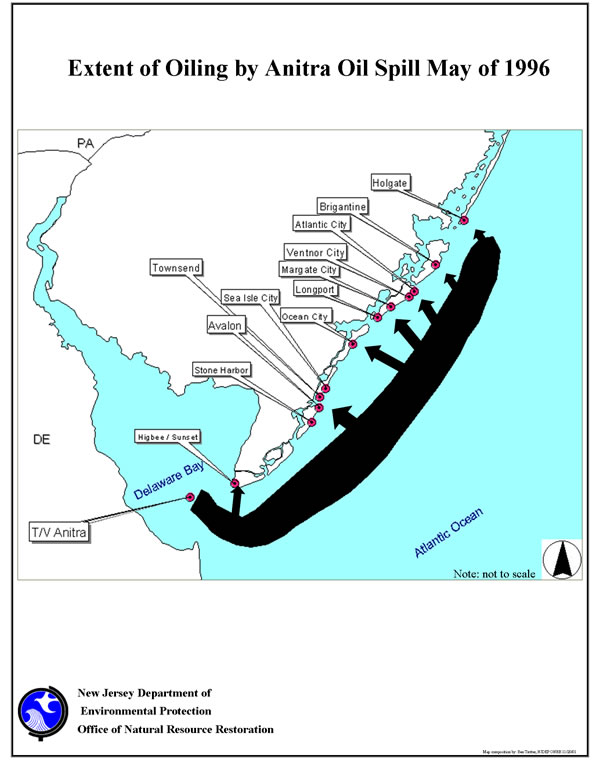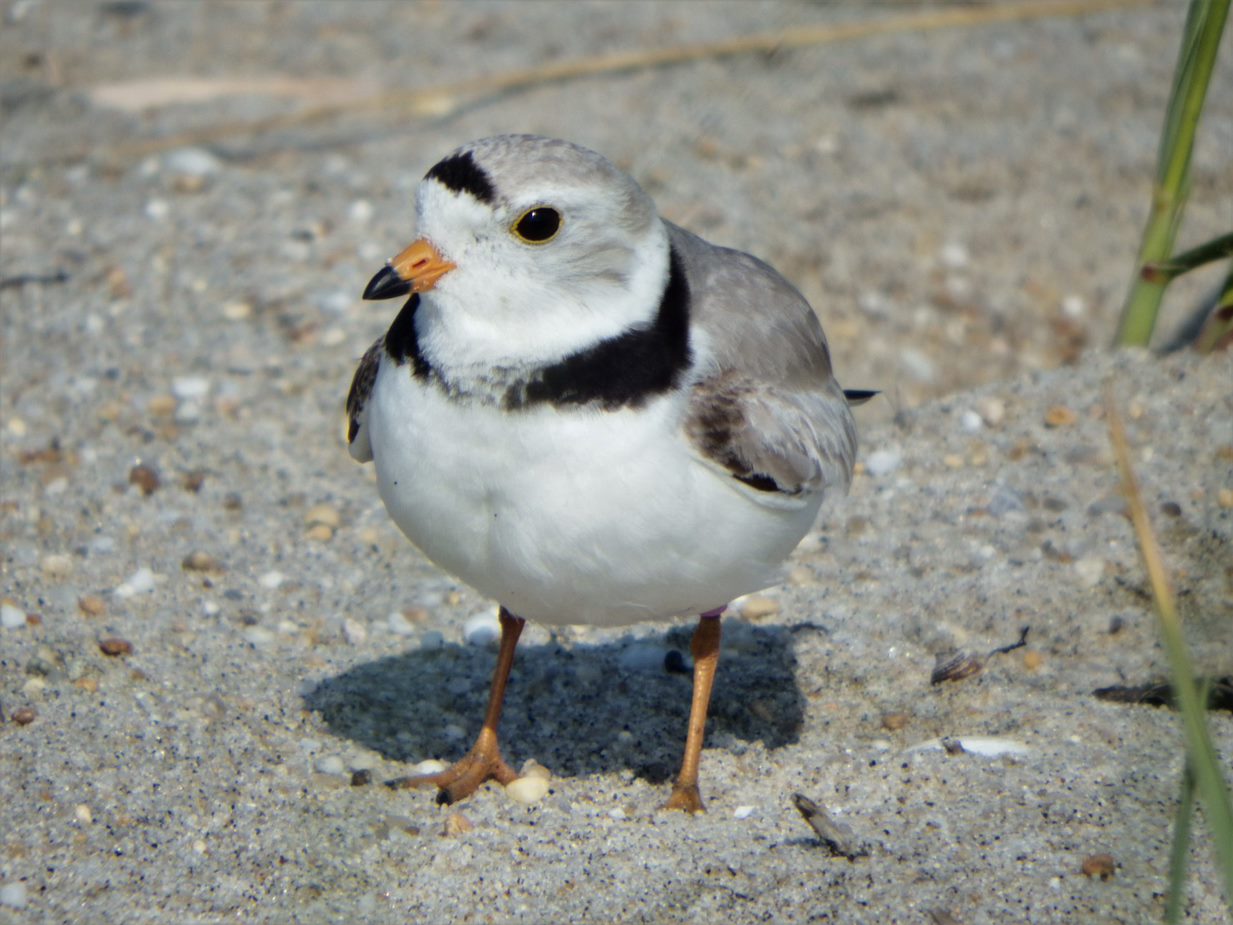Anitra Oil Spill and Restoration
LOCATION: Big Stone Anchorage, Delaware Bay
BACKGROUND: On May 10, 1996, the U.S. Coast Guard (USCG) reported that the Bahamian-flagged T/V Anitra spilled approximately 10,000 gallons of Nigerian light crude oil while the vessel was in the process of lightering more than 40 million gallons of oil. On May 19, 1996, the USCG reported that as much as 42,000 gallons of oil were released into Big Stone Anchorage, Delaware Bay, where the vessel was anchored. Cold and stormy weather during the spill caused the oil to mix into the water column, forming tarballs. The T/V Anitra was secured and boomed following the release and 12,000 gallons of oil were recovered in the vicinity of the vessel within the first 72 hours following the spill.
Over 50 miles of beaches were oiled as a result of the spill for over a 2-week period. Several State wildlife management areas, two State Parks and the Edwin B. Forsythe National Wildlife Refuge were impacted. An estimated 3 miles of beach (Higbee and Sunset) were impacted with tarballs from May 12 – 16, 1996. On May 17, 1996, varying densities of tarballs washed up on 8 miles of Atlantic Ocean shoreline in Stone Harbor, Avalon, Sea Isle City, and Ocean City. The tarballs continued to drift northward and washed up on beaches in Longport, Margate, Ventnor, and Atlantic City later reaching Brigantine and later as far north as Holgate.
Injured Resources
Most of the impacts from the Anitra spill occurred on bayshore and coastal barrier beaches. The beaches oiled by the 1996 Anitra oil spill in Cape May and Atlantic Counties provide foraging and nesting habitats to piping plovers (Charadruis melodus), a shorebird listed as threatened under the federal Endangered Species Act of 1973 (87 Stat. 884, as amended; 16 U.S.C. 1531 et seq.) (ESA) and as endangered under New Jersey’s Endangered and Nongame Species Conservation Act of 1973 (N.J.S.A. 23:24 et seq., as amended). Unfortunately, the spill occurred during a period when most piping plovers were involved in nesting activity. Piping plovers nest on the upper beach on the foredune, berm, dune blowouts, overwashes and tidal flats (U.S. Fish and Wildlife Service, 1996). Piping plovers primarily feed on a variety of aquatic and terrestrial invertebrates. Oil exposure of these birds occurred as they foraged among stranded tarballs in the upper intertidal zone of the bayshore and coastal beaches.
The Anitra oil spill resulted in the oiling of at least 51 adult piping plovers and two chicks during the 1996 nesting season. The oiling directly or indirectly contributed to reduced nesting success and ultimately lowered productivity on affected beaches.
In addition to the piping plover, a number of other bird species were observed on the oiled beaches such as sanderlings (Calidris alba), semipalmated plover (Charadrius semipalmatus), semipalmated sandpiper (Calidris pusilla), ruddy turnstone (Arenaria interpres), and short-billed dowitcher (Limnodromus griseus) and breeding residents willet (Catoptrophorus semipalmatus), American oystercatcher (Haematopus palliates), common tern (Sterna hirundo) and laughing, herring, and great black-backed gulls (Larus atricilla, L. argentatus, and L. marinus, respectively).

